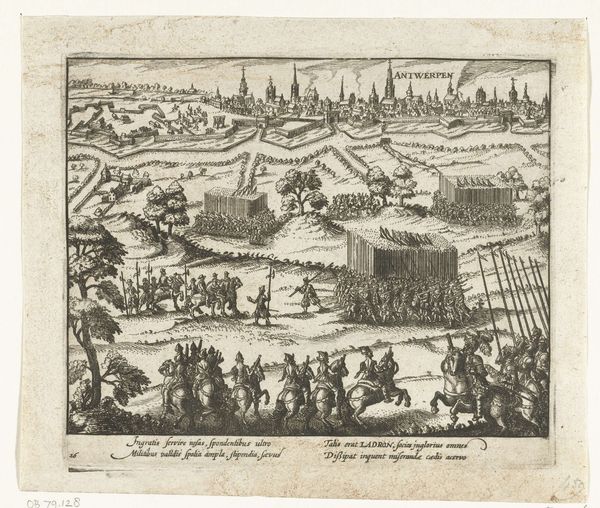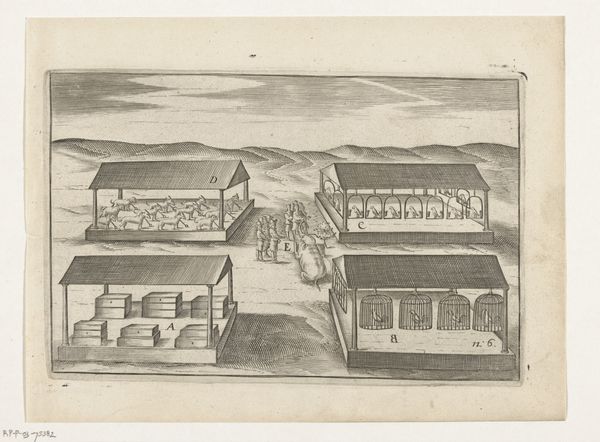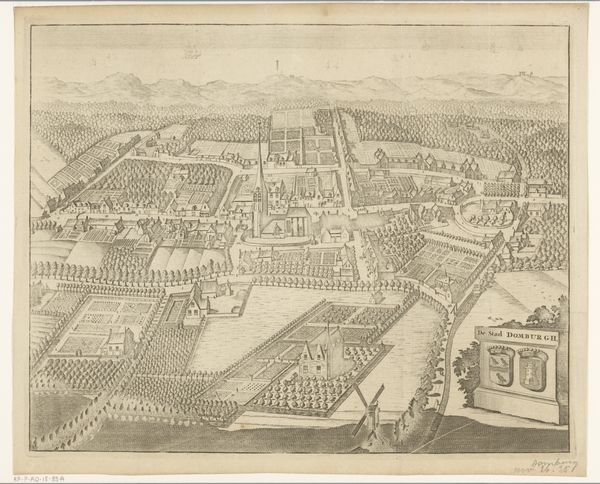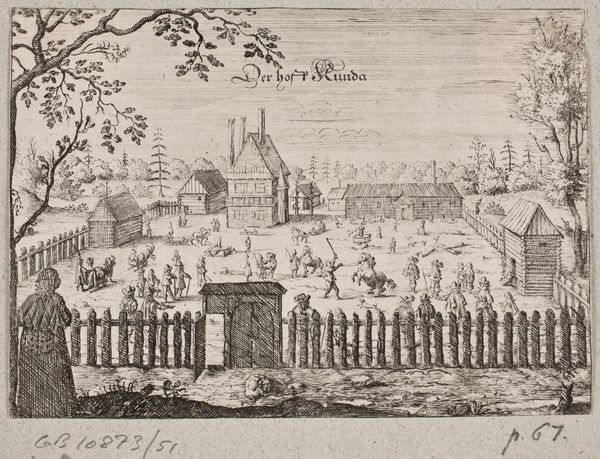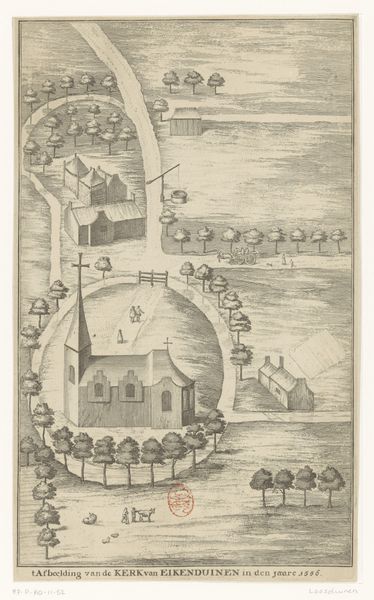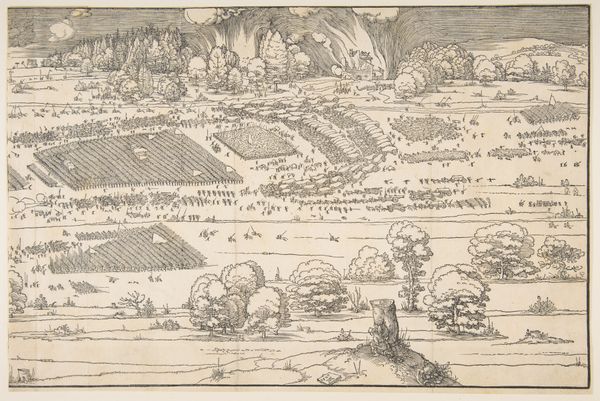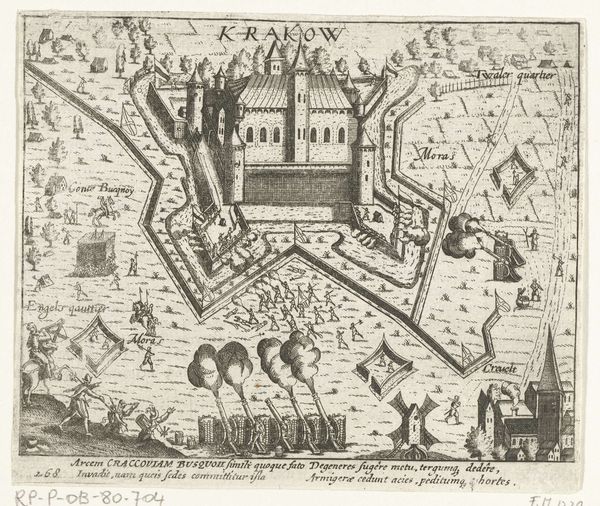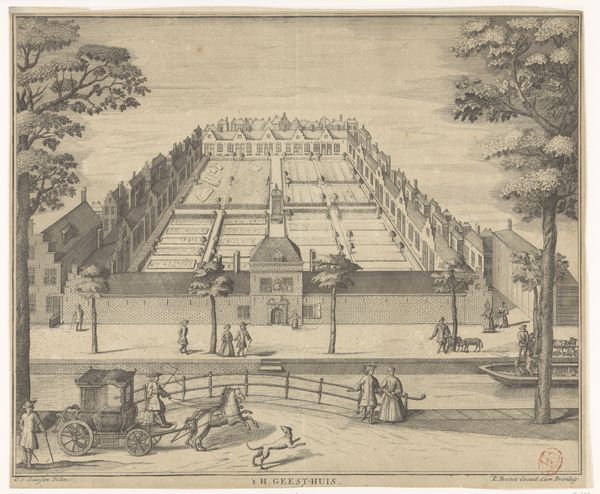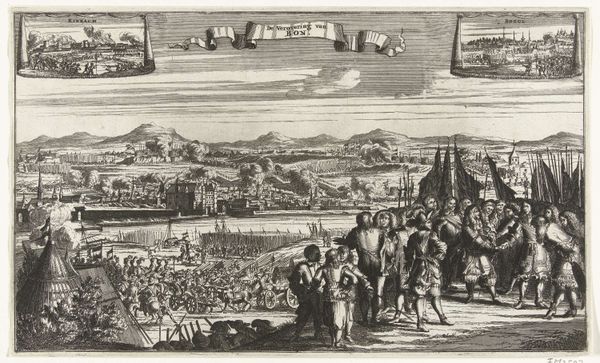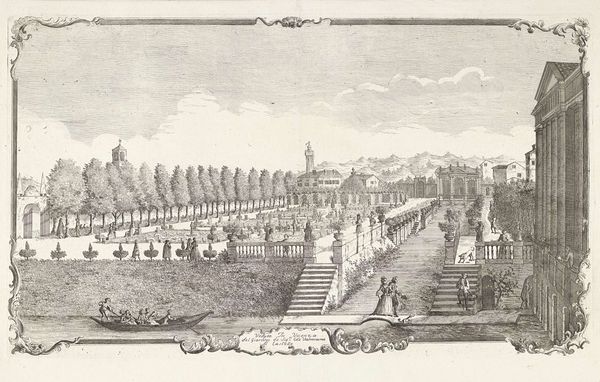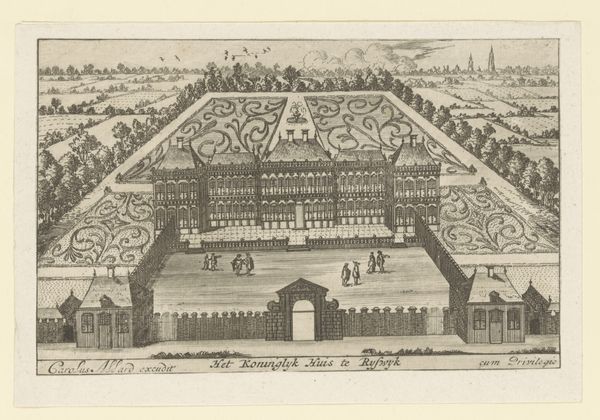
print, engraving
# print
#
landscape
#
cityscape
#
islamic-art
#
history-painting
#
engraving
Dimensions: height 108 mm, width 153 mm
Copyright: Rijks Museum: Open Domain
Editor: We are looking at an engraving titled *De koning van Ternate bezoekt de moskee, 1599*—that means, The King of Ternate Visits the Mosque, 1599. It’s an historical image, likely created sometime between 1600 and 1645. It looks quite detailed for a print, depicting a procession in what seems to be a bustling cityscape. What's your take on how this print reflects the relationship between art and the socio-political climate of the time? Curator: It's fascinating how this image encapsulates the cultural and political tensions of the 17th century. Think about the context: The Dutch East India Company was aggressively expanding its influence in Southeast Asia, including Ternate. This print, made by an anonymous artist, isn't just a depiction of a king visiting a mosque. It's a visualization of power dynamics. Editor: Power dynamics? How so? Curator: Well, consider who the intended audience was. Prints like these circulated widely in Europe. They served as visual propaganda, shaping public opinion about the Dutch presence in the East. The meticulous details – the architecture, the procession – lend an air of authenticity, but the artist's perspective is undoubtedly filtered through a colonial lens. Ask yourself: what purpose did that lens serve? Editor: I guess it presents the Dutch as informed, knowledgeable... maybe even implicitly justifies their presence in Ternate by showcasing local customs, perhaps even subtly suggesting a need for 'civilizing' influence? Curator: Precisely. The print is a performance, staged for a European audience, carefully constructed to convey a certain narrative about Dutch involvement in Ternate. These images did real cultural and political work. Understanding them helps us understand that visual rhetoric and its capacity for influencing public perception is a really, really old practice! Editor: So it’s about recognizing the biases inherent in historical representations, especially in art tied to colonial ventures. Food for thought. Thanks! Curator: Absolutely! It's about unraveling the layers of meaning and critically examining the relationship between art, power, and historical narrative. Something to remember going forward!
Comments
No comments
Be the first to comment and join the conversation on the ultimate creative platform.

